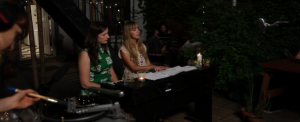

The unfamiliarity is what makes you dislike it, not the voice itself.īut try telling your brain that. Just as you’re used to looking at yourself in the mirror, and as a result don’t like the way you look un-mirrored, you are used to your otoacoustic voice, so you don’t like the un-bassed version.

It sounds so weird.Īs Guido (our friend from the blog comments) says, it is the familiarity principle at play. When we first encounter something new, such as our disembodied voice for the first time, the immediate response is one of aversion. Once you hear the recording, our friend mere exposure rears its head. That’s the physiology, now to the psychology. Getting used to the sound of your own voice Your skull is effectively a subwoofer for your voice, turning your David Beckham into the low James Earl Jones you know and love. Researchers from the Max Planck Institute in Frankfurt and Imperial College London have recently shown that these temporal bone vibrations can then act on the cochlea directly, not even vibrating the eardrum, increasing the bass component as you speak. This is called bone conduction, or otoacoustics. Higher frequencies are weaker, whereas the lower frequencies in your voice can travel all the way to your temporal bone in which your ear sits. But different frequencies are transmitted better through dense material such as bone. But there is another way for the sound of your own voice to reach the cochlea and for you to hear it: through the bones in your head.Īs you speak, your vocal chords are vibrating, which in turn vibrates your entire skull. Your voice comes out of your mouth, travels round to your ear, and down your ear canal. When you’re speaking, you hear some of the sounds the same way. These cells convert this movement into electrical activity, which your brain perceives as different sounds - barking, laughing, beeping, giraffe greetings. These are connected to your cochlea, which is a fluid-filled sac with small “hair cells” inside.Īs the bones vibrate, the fluid moves inside the cochlea, moving the hair cells. Sound comes into your ear canal, vibrates your tympanic membrane (eardrum), which in turn moves the tiniest bones in your body - the malleus, incus, and stapes. “The voice you hear as you’re speaking? You are the only person that ever hears that voice.”įor most of the sounds you hear - a dog bark, a baby laughing, a car beeping, a giraffe greeting another giraffe - the sound is traveling through the air.


 0 kommentar(er)
0 kommentar(er)
